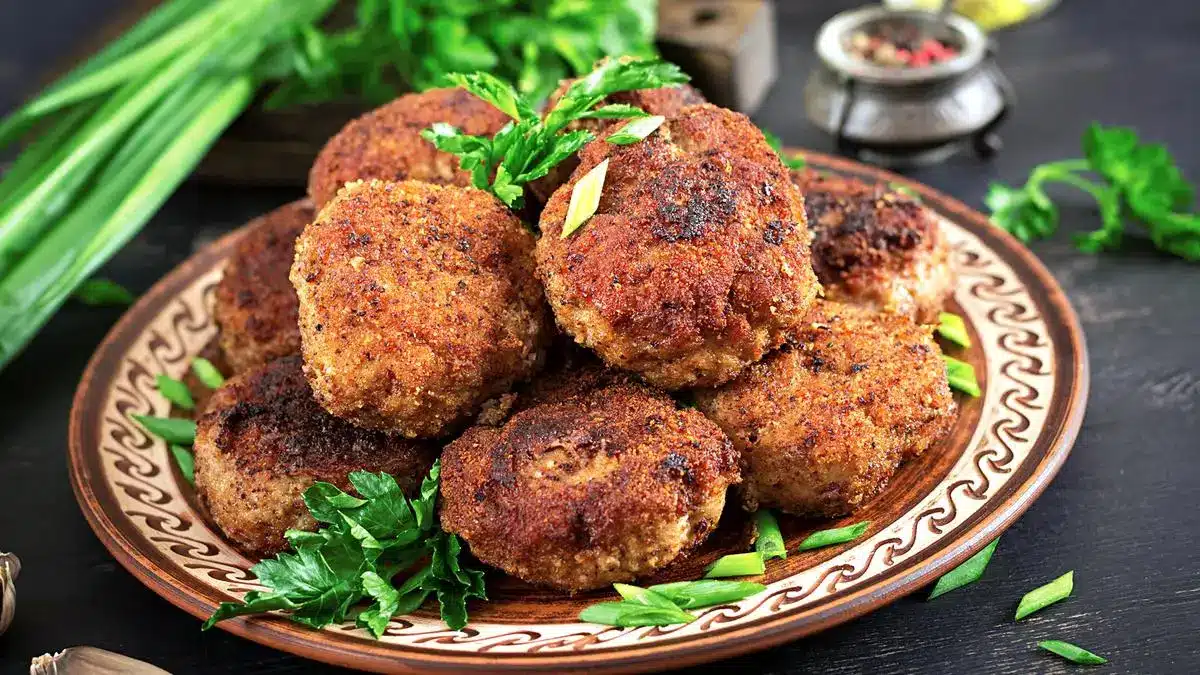About Maillard Reaction:
- It was named after the early 20th-century French scientist Louis-Camille Maillard.
- The Maillard reaction is a chemical process that occurs when amino acids, which are the building blocks of proteins, and sugars are heated. The process affects the flavours, aromas, and textures of foods.
- This reaction is a form of non-enzymatic browning of food, which means that the colour change occurs without the activity of enzymes.
How does the Maillard reaction cause browning of food?
- It is a complex chemical mechanism that leads to the formation of multiple products through the process. Chemist J.E. Hodge in 1953 was the first to break down the reaction into steps for simplification.
- A variety of foods, including meats, bread, vegetables, coffee beans etc., contain both sugars and protein units.
- When food is heated, these sugars and proteins undergo a condensation reaction to form a protein-sugar compound called unstable Schiff base.
- When the Schiff base is rearranged and dehydrated, various intermediate compounds form. These compounds react further to produce important flavour compounds and contribute to the development of characteristic aromas in the food.
- Some of the intermediate compounds undergo a rearrangement, which results in the reorganisation of the atoms in the Schiff base, creating a more stable product. These products are important precursors for melanoidins, which are responsible for the brown coloration of the food.
- These compounds undergo further changes like condensation and polymerisation, leading to the formation of melanoidins — nitrogen-containing compounds that give food the distinct brown colour.
- Factors affecting the reaction
- The rate and extent of this reaction depend on several factors, including temperature, acidity, moisture content, and the types and concentrations of proteins and sugars in the food.
- Ideal Temperature: These are in the range of 110 degrees C and 170 degrees C, and temperatures higher than that can burn the food and render bitter flavours.
- Generally, higher temperatures accelerate the reaction while acidic conditions and the presence of water can inhibit it.
- This is the reason that foods brown more quickly at higher temperatures and dry foods, such as bread crusts, can develop a deep brown colour during baking.
Q1: What are Polymers?
These are materials made of long, repeating chains of molecules. The materials have unique properties, depending on the type of molecules being bonded and how they are bonded. Some polymers bend and stretch, like rubber and polyester. Others are hard and tough, like epoxies and glass.
Source: Science for All | What causes the browning of food?
Last updated on June, 2025
→ UPSC Notification 2025 was released on 22nd January 2025.
→ UPSC Prelims Result 2025 is out now for the CSE held on 25 May 2025.
→ UPSC Prelims Question Paper 2025 and Unofficial Prelims Answer Key 2025 are available now.
→ UPSC Calendar 2026 is released on 15th May, 2025.
→ The UPSC Vacancy 2025 were released 1129, out of which 979 were for UPSC CSE and remaining 150 are for UPSC IFoS.
→ UPSC Mains 2025 will be conducted on 22nd August 2025.
→ UPSC Prelims 2026 will be conducted on 24th May, 2026 & UPSC Mains 2026 will be conducted on 21st August 2026.
→ The UPSC Selection Process is of 3 stages-Prelims, Mains and Interview.
→ UPSC Result 2024 is released with latest UPSC Marksheet 2024. Check Now!
→ UPSC Toppers List 2024 is released now. Shakti Dubey is UPSC AIR 1 2024 Topper.
→ Also check Best IAS Coaching in Delhi
























